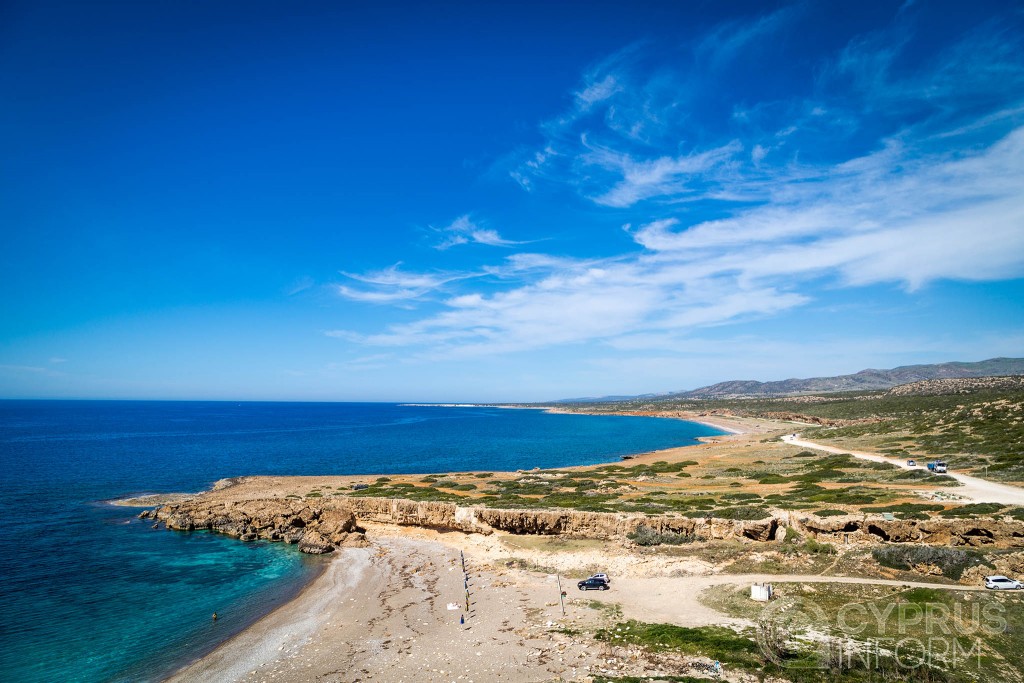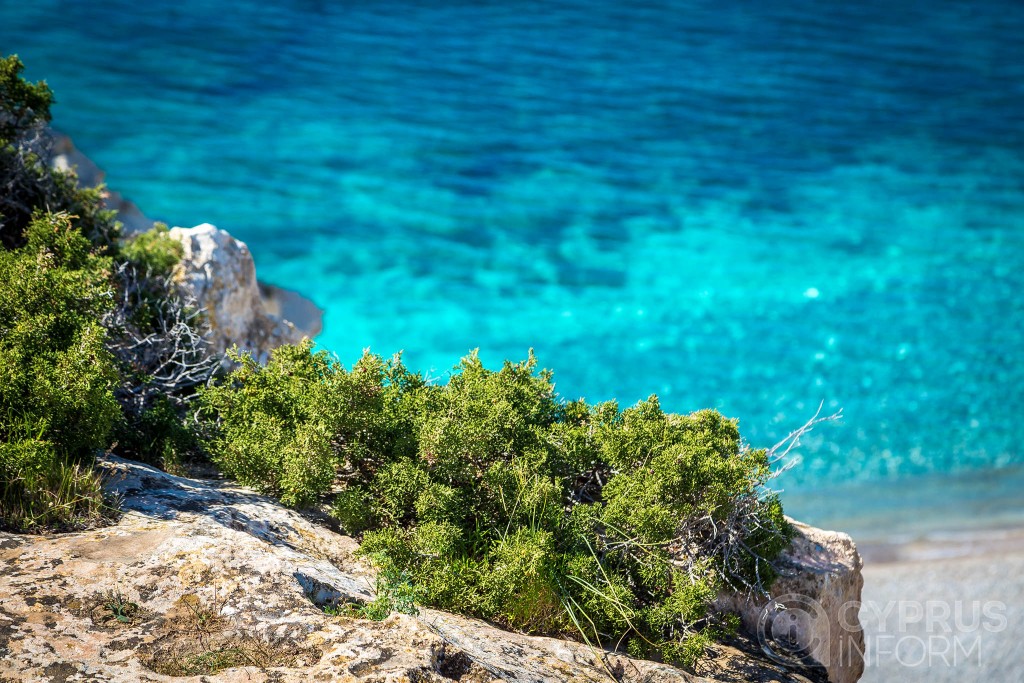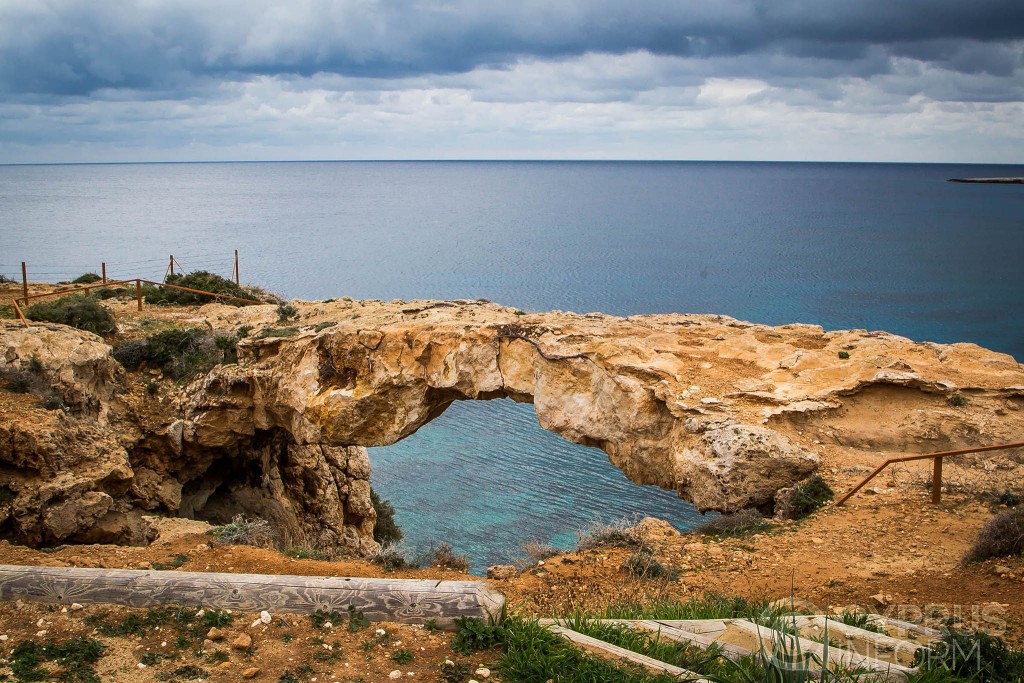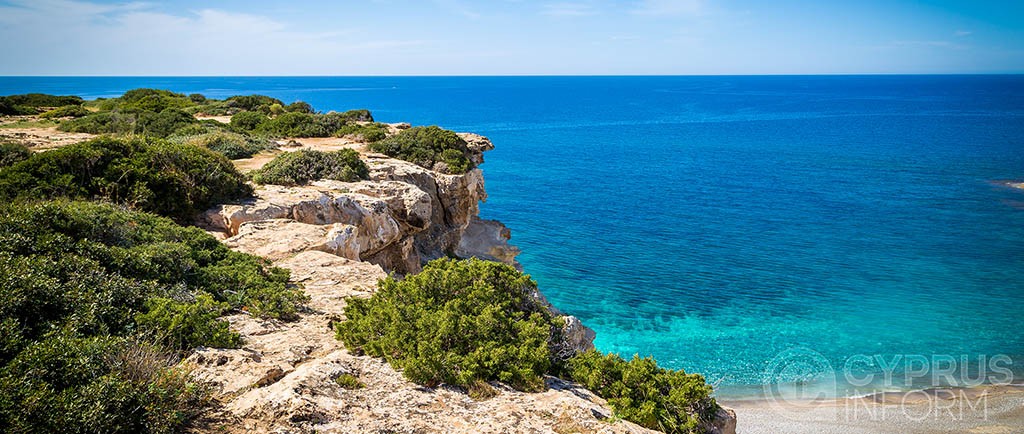History of the Forest Park “Cape Greco” (Cavo Greco)

As part of the protected areas network by the EU member states, the Natura 2000, the park was declared a national park, the main objective of which is the preservation of the landscape and the unique nature of the eastern part of Cyprus.
The national park, in contrast to the reserve where almost all human activity is banned, allows tourists and small business activities.
Independent research, the walks and the opportunity to enjoy picnics in the area, actively attracts more tourists to the whole of Cyprus, than Famagusta did.
In addition to walking and cycling in the park tourists can::

- visit the largest and most famous cave of the Cyclops (Cyclop’s Cave);
- see the remains of the ancient temple of the goddess Aphrodite;
- picnic in the designated areas;
- swim in the turquoise waters of Konnos Bay;
- dive and snorkel.
What is unique about “Cape Greco” park?
In the park there are bike trails, a network of hiking trails with benches and picnic areas, and coastal cliffs with spectacular views over the crystal clear sea.
Most of the hiking trails are surrounded by pine trees and junipers. The average time to complete a trail is from 45 minutes to an hour and a half. The trails at Cavo Greco Park are easy with small slopes, suitable for people of any fitness and age.
In the park there are 5 walking routes:

- Direct route “Sea caves – Agia Anargyri”, 4 km length.
- A circular route “Aphrodite”, 2.5 km length.
- A circular route “Kony – Cyclop’s Cave”, 1, 7 km length.
- A circular route “Kavos”, 1.2 km length.
One of the walking trails is included in the part of the European walking route E4, which passes from Gibraltar to Cyprus.
Another trail is part of the “Cultural Aphrodite Route”, which received its name in honour of the goddess. The path, 2 km in length, passes through the National Forest Park “Cavo Greco,” down to the beach and out to the famous attractions of Cyprus – a love bridge and a bridge of sinners. The route crosses many lookouts, with spectacular views of the surrounding area of Cape Greco.
The flora and fauna of “Cavo Greco” park
Once the Cavo Greco national park was covered with tall trees, but nowadays the flora of the park is characterized by low vegetation. The most common plants of the park are: the Phoenician Juniper, Mastic tree, Acacia, Wild Olive, Fennel, Wild Garlic and three-coloured Chamomile, to name a few.
The fauna of Cape Greco nature reserve has several representatives of mammals such as hedgehogs, hares and foxes, reptiles – lizards and snakes, and birds, most of which are migratory.
How to get to the park
“Cavo Greco” (Cape Greco) Park is situated on the same cape, about 6 km from the centre of Protaras and 7 km from the centre of Ayia Napa. The park can be reached from the nearest towns by using the No. 101 and 102 buses, taxis and hired vehicles, bicycles or on foot along the footpath.
Vacationers from other cities in Cyprus can get to the Cape Greco (“Cavo Greko”) Park by private transport, or use the excursion programmes.
